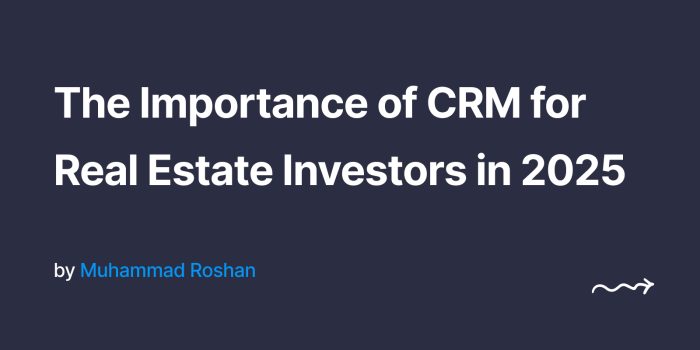Introduction:
Every wise investor is aware that luck cannot build a profitable real estate wholesale company. It calls for systems, strategy, and wise judgments. You might believe that success comes from simply owning more real estate. However, your management, tracking, and diversification of those assets will determine everything. REI Podio CRMs help with this. It is a control center for building a steady and lucrative real estate portfolio, not just another CRM.
There is no buzzword for diversification. It’s your protection when one market declines or a tactic fails. Podio CRM allows you to create a system that reduces risk and supports development. Using the tools and structure that REI Podio CRMs offers, this blog will teach you how to effectively diversify your portfolio. You will also learn why Podio for real estate is altering wholesale business management practices.

Why Diversification Is Important for Real Estate Wholesaling Companies
Real estate is a serious risk. One downturn, one poor rental season, one costly renovation project can throw everything off. If your real estate portfolio consists of only one asset kind or location, a change in the market could be very expensive. Therefore, dividing your assets among several property kinds, techniques, and areas helps to maintain constant profits. One source slows down; others can keep cash flowing.
Diversification is more than just a defensive action. You also create several earning sources. Various types of properties provide varying degrees of stability, value, and cash flow. Rei Podio CRMs enable you to monitor and control every one of them in real time, so you’re always in the know. The Podio CRM solution provides you with the visibility to make less-guessing-based, faster, wiser decisions.
Maximizing Cash Flow with Diverse Real Estate
Every investor searches for dependable income. If all of your properties run under the same concept, then that is difficult. Vacation rentals, for instance, may remain empty in off-seasons yet bring in great profits at busy times. Conversely, long-term rentals sometimes offer a set monthly income. Combining these in your portfolio helps you to level the highs and lows.
Management of both kinds of rentals is simple with Podio CRM. You may program reminders, rent tracking, and maintenance follow-up. REI Podio CRMs present a comprehensive picture of the performance of every component of your portfolio. You can thus react fast and prevent unwarranted losses.
Distinct Property Types: Managing Risk
Combining residential, commercial, and mixed-use assets is among the most sensible approaches to diversify your real estate wholesale company. Usually starting with residential properties—especially single-family homes—new investors start here. Usually more reasonably priced and easy to handle, they, under one roof, multifamily structures let you house several renters. You are still making money from the others, even if one tenant goes.
Like office buildings and retail areas, commercial real estate can yield better profits. The risks are more, though. As remote employment and e-commerce become more common, certain business establishments find demand shifting. Still, online buying has driven increasing demand for warehouses and industrial buildings.
Including mixed-use properties in the mix results in one building having both commercial and residential cash flows. Tracking leases, collecting payments, and monitoring performance free from stress through a customized CRM, such as REI Podio CRMs, enables you to sort things out.

The Influence of Geographic Diversification
Location is intimately related to real estate performance. What is good in one city may not be in another. A diverse real estate portfolio should include cities as well as, if at all possible, entire nations. Properties in a stronger market can help you meet your income objectives even if one city suffers a slowdown.
Especially helpful for managing assets in several locations is Podio for real estate. Your dashboard with REI Podio CRMs updates you on every property, anywhere it is located. Within the CRM, you may segment properties by area, assign regional responsibilities, and maintain relationships with local administrators.
CMaking foreign investments and tracking them with Podio CRM
Traveling abroad opens fresh chances for development. International investments give access to fast-growing markets, even if they involve additional hazards such as regulatory differences and currency exchange. Real estate investors seeking higher profits have made Southeast Asia and portions of Europe rather attractive.
Customizing Podio allows you to track foreign assets just like you handle local ones. Custom fields for foreign exchange rates, local laws, and overseas contacts are made possible by REI Podio CRMs. That kind of adaptability maintains seamless systems even in cases of distance between your properties.

Investigating New Investment Vehicles Apart from Direct Control
Investing doesn’t just involve owning physical stuff. REITs, or real estate investment trusts, let you own company stocks invested in real estate. They are a passive approach to include assets that generate income for your portfolio. Syndications or crowdsourcing projects allow you to combine money from several investors to buy huge properties.
These cars let you enter into better agreements without running up daily expenses. You can track your returns even though you have little influence over the property. Without outside spreadsheets, REI Podio CRMs let you track dividends, create profiles for REITs or syndications, and analyze performance.

Experimenting with several investment approaches helps one stay balanced.
One-size-fits-all is not what real estate offers. Your strategy should alter depending on your objectives and the market. For consistent income and appreciation, long-term buy-and-hold plans are quite effective. Fix-and-flip initiatives carry more risk but can provide rapid earnings if you want speedier results. Although they demand regular supervision, short-term rentals provide great monthly returns during busy seasons.
Rei Podio CRMs let you avoid juggling all this personally. Tag properties by strategy; monitor renovation progress; create buy-and-hold vs flip opportunity schedules. Customizing Podio helps you create a dashboard that fits your particular style.

Analyzing Possibilities Using Clearer Data
Ask whether a new contract matches your overall strategy before accepting it. Look at the market first. Examine corporate expansion, demographic patterns, and employment growth. That’s a great beginning if the local economy appears strong.
Running the numbers comes next. Check total return, cash flow, and cap rate. You need actual revenue, not only hope for appreciation. Tools available on the REI Podio CRMs allow you to compute these numbers straight within your CRM. You’ll know whether a bargain is worth it before laying money down.
Evaluate the liquidity of the investment. Fix-and-flips tie down capital but return faster. Rentals give consistent income, but make it more difficult to get your money right away. One balances both with a diversified portfolio.

Errors to Steer Clear Of When Diversifying a Real Estate Portfolio
Though overdoing it can be just as disastrous, diversification helps lower risk. Managing everything gets challenging if you have too many different kinds of properties spread over too many locations. Systems, then, are important since they influence everything. Rei Podio CRMs arrange your whole portfolio in one location, therefore helping to simplify complexity.
Ignoring research is another often-made mistake. Not every market is formed equally. Ignorance of local rules, demand, and rental rates can make a good investment a money trap. Podio CRM lets you arrange this data so that, rather than relying just on emotions, every choice is grounded in facts.
At last, give liquidity some thought. A few homes tie up your money for years. Should unanticipated expenses develop, you could have difficulty if your entire portfolio is illiquid. To be adaptable, keep a mix of long-term and more easily available investments.

Conclusion
Your finest protection against erratic income and market swings is diversification. Although a well-balanced real estate portfolio is not created overnight, employing the correct tools will help to simplify and make the process. Whether your investment is in commercial real estate, short-term rentals, or single-family residences, structure is the answer to handling it all.
REI Podio CRMs takes the front stage here. Its strong Podio CRM customization will help you to handle leads, properties, and strategies all in one location. There is no hopping between tools. There will be no more lost chances. Just plain, orderly, and targeted investing.
It’s time to switch your operations to REI Podio CRMs if you’re ready to bring organization to your real estate wholesaling company and wish to grow boldly with less turbulence. Let your CRM handle the heavy work so you may concentrate on wise investments and the expansion of your real estate portfolio, the correct way.









